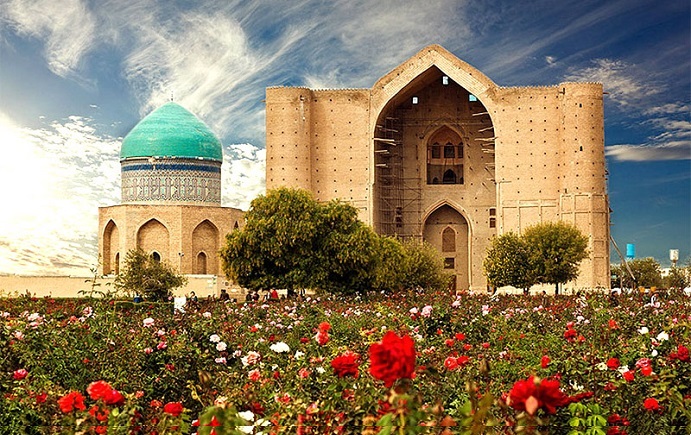
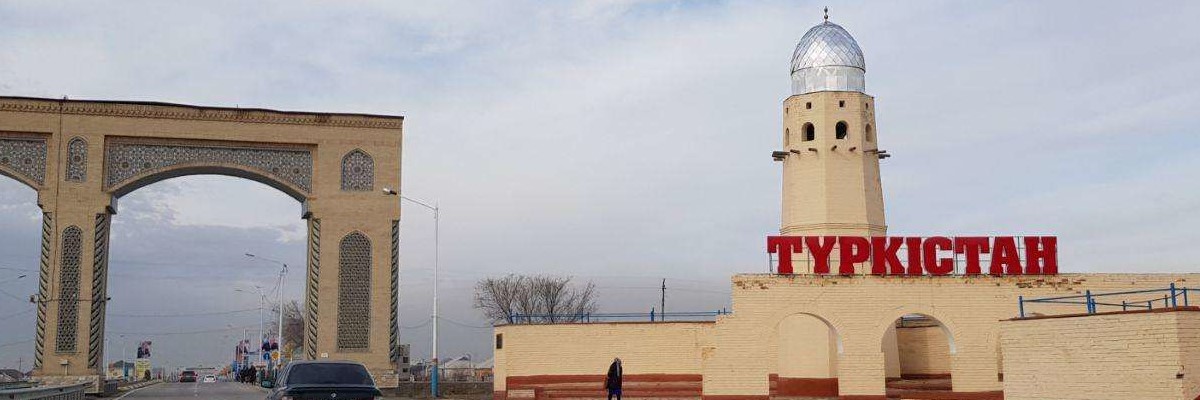
The southern part of Kazakhstan is rich in its historical places. And one of the most significant and even sacred places is the city of Turkestan. We will tell you why this city is considered sacred, and how it attracts crowds of tourists and religious people to itself.
Turkestan is one of the most ancient cities, the age of which is more than one and a half thousand years. And this is no accident, because long ago Turkestan was the capital of the Kazakh Khanate and was a significant figure both in politics and in the infrastructure of the khanate. For the same reason, Turkestan lands are rich in burials of noble people who directly influenced the formation and development of the Kazakh Khanate, which is why Turkestan is one of the favorite places for historians to visit and stay.
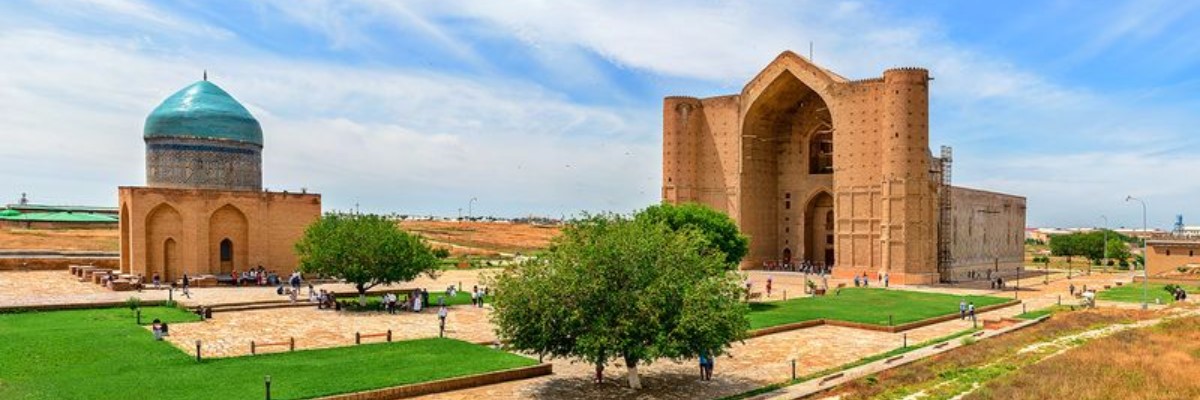
But Turkestan's "gold bar" has always been and remains a well-known temple - the mausoleum of Khoja Ahmed Yasawi. The mausoleum itself was erected at the end of the XV century. Everyone who wants to get to the temple is greeted by a huge portal - the entrance to the mausoleum. The central hall is very large and leads to many rooms for various purposes, and in the middle there is a huge cauldron into which you can throw a coin and make a wish, in the belief, if the desire has the kindest and pureest thoughts, then it will certainly come true. The architecture of the building itself is also noteworthy, the mausoleum has the largest surviving brick dome in Central Asia, whose diameter reaches 18.2 meters. The technique of making bricks, inlaying and carving on the wooden elements of the temple, as well as the lining itself, all here preserved the beauty of that time and the excellence of the craftsmen who put their soul into their work.
Also, the temple is of great importance for the Muslim community, it is believed that triple arrival in Turkestan is equivalent to one visit to the shrine of Mecca. Khoja Ahmed Yasawi Temple is a UNESCO World Heritage Site.

Another wonderful mausoleum and a wonderful reason to visit Turkestan and its environs is the Arystan Baba Mausoleum.
Many have been here, even more people are aware of the existence of the building, but few people know the connection between Arystan-Bab and Khoja Ahmed Yasawi. But he was his mentor.
A captivating narrative unfolds around Arystan-Bab, a companion of Prophet Muhammad, during a shared meal of persimmons with the Prophet and fellow companions. As a persimmon repeatedly falls from the bowl, a revelation reveals that it belongs to a future Muslim named Ahmed, born 400 years later. Prophet Muhammad shares this foresight, and Arystan-Bab boldly challenges anyone to undertake the task of delivering the fruit to Ahmed. Arystan-Bab later fulfills this prophecy, becoming Ahmed's mentor. The mausoleum built on Arystan-Bab's grave in the Turkestan region stands as a testament to this unique connection, situated near the Otrar fortress, which will be explored further in our narrative.
As you know, the mausoleum was erected on the grave of the saint and shares the land of the Turkestan region with his student. It is located near the fortress Otrar, which we will talk about later.
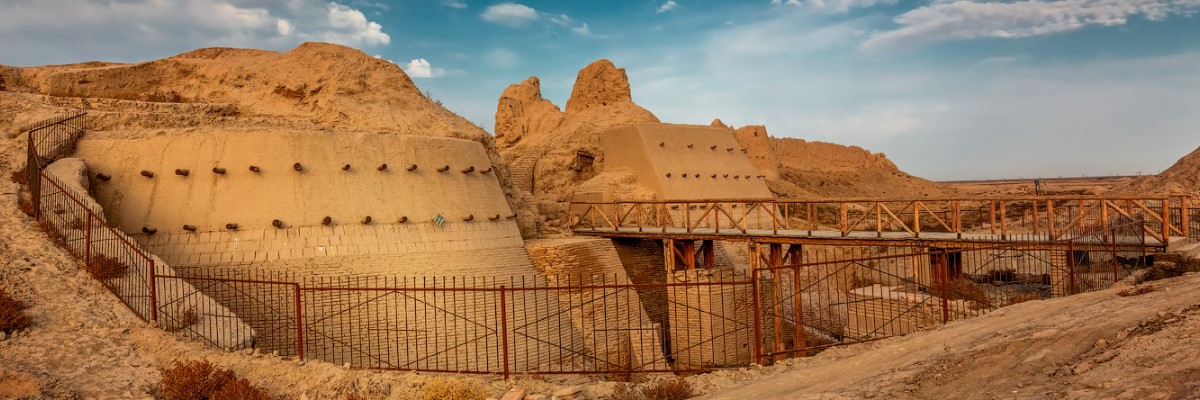
Many of us know about Otrar from the history school curriculum. The city was of great importance and at one time, before the invasion of the Mongols, was considered one of the major cities of Central Asia. Otrar had a rich infrastructure, which included a large madrasah, a bazaar, a forge, shops, mosques and baths and other structures.
Everything changed dramatically after the invasion of the Mongols under the leadership of the sons of Genghis Khan. The reason was the execution of the ambassadors of Genghis Khan and in 1219 the city was besieged for 6 months. During this time, the city’s supplies were depleted, and its authorities did not want to hand over it, which not everyone liked. One night, one of the citizens decided to end the siege and secretly opened the gates to the Mongols, thereby betraying their people. For his betrayal, the townsman was executed by the eldest son of Genghis Khan, Jochi, they burned the city, killed most of the population, and took the remaining people into slavery.
In the fifteenth century, the city decided to rebuild. Since then, the most significant event that occurred in Otrat was the death of Tamerlane in 1405. Otrar was also part of the Kazakh Khanate in the period from 1465 to 1718. It was later destroyed by the invasion of the Dzungars and was completely abandoned by the beginning of the nineteenth century.
Quite an interesting place for lovers of historical events and stories of surviving states and empires.
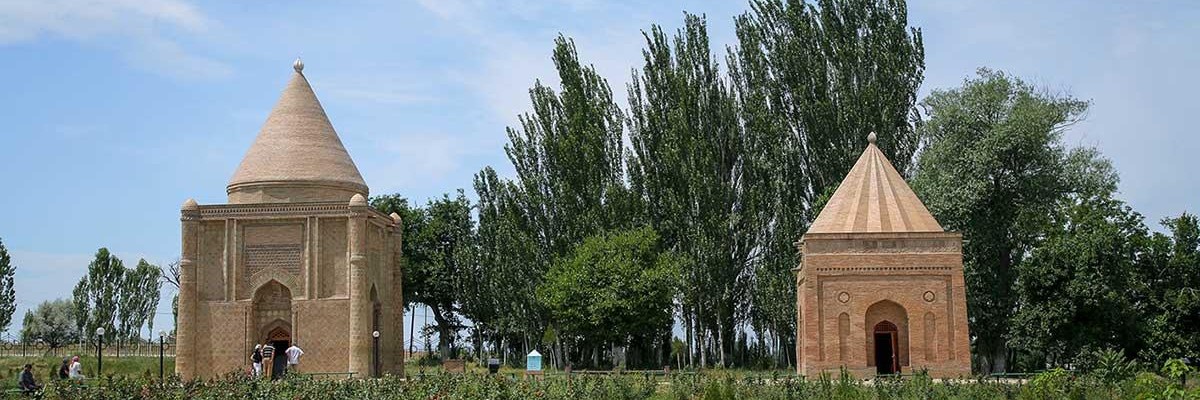
A pair of mausoleums, which will also meet during a trip to Turkestan, are the mausoleums of Aisha-Bibi and Babaji-Khatun. The history of both structures is connected with each other and has common legends about its appearance. In total, there are about twenty versions of the legends.
According to one of the most common versions, Aisha - Bibi is considered to be the daughter of one of the most famous poets and scientists of the eleventh century. After the death of her father, Aisha was brought up by Sheikh Aikozhi.
As time passed, the girl grew prettier and took a closer look at the ruler of the lands of Taraz - Karahan Muhammad, but her mentor did not approve of the union, which provoked the escape of Aisha. Having deceived the sheikh, the girl left her home and went to Taraz, but on the way near the Asa River she was bitten by a snake, from which she died.
Later, a heartbroken bridegroom erected a mausoleum at the place of her death, the guardian of which was her fellow traveler Babaji - Khatun, who was buried in a mausoleum called Babaji - Khatun twenty meters from the Aisha - Bibi mausoleum.
Here is such a sad and interesting legend, the variants of which you will hear more than once during a tour of Turkestan and its holy places.
And in general, the whole city of Turkestan is an architectural and historical heritage of Kazakhstan, there are many places here, a visit to which will delight you. For example, the railway station of Turkestan, but it is considered an architectural monument. It was built in the distant 1903 during the laying of the Orenburg-Tashkent railway lines.